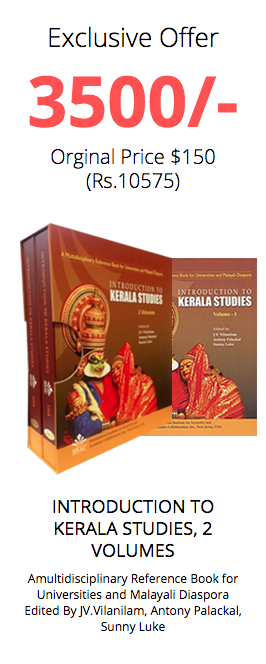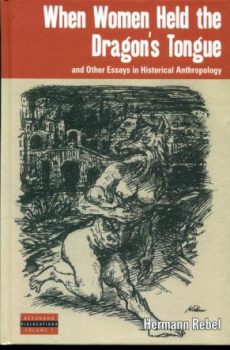
When Women Held the Dragon’s Tongue
8,400.00₹ 5,995.00₹
Peasants tell tales,A” one prominent cultural historian tells us (Robert Darnton). Scholars must then determine and analyze what it is they are saying and whether or not to incorporate such tellings into their histories and ethnographies. Challenging the dominant culturalist approach associated with Clifford Geertz and Marshall Sahlins among others, this book presents a critical rethinking of the philosophical anthropologies found in specific histories and ethnographies and thereby bridges the current gap between approaches to studies of peasant society and popular culture. In challenging the methodology and theoretical frameworks currently used by social scientists interested in aspects of popular culture, the author suggests a common discursive ground can be found in an historical anthropology that recognizes how myths, fairytales and histories speak to a universal need for imagining oneself in different timescapes and for linking one’s local world with a knownA” larger world.

Deterritorialized Youth
8,400.00₹ 2,350.00₹
The Sahrawi and Afghan refugee youth in the Middle East have been stereotyped regionally and internationally: some have been objectified as passive victims; others have become the beneficiaries of numerous humanitarian aid packages which presume the primacy of the Western model of child development. This book compares and contrasts both the stereotypes and Western-based models of humanitarian assistance among Sahrawi youth with the lack of programming and near total self-sufficiency of Afghan refugee youth in Iran. Both extremes offer an important opportunity to further explore the impact which forced migration and prolonged conflict have had, and continue to have, on the lives of these refugee youth and their families. This study examines refugee communities closely linked with the United Nations High Commission for Refugees (UNHCR) and a host of other UN agencies in the case of the Sahrawi and near total lack of humanitarian aid in the case of Afghan refugees in Iran.
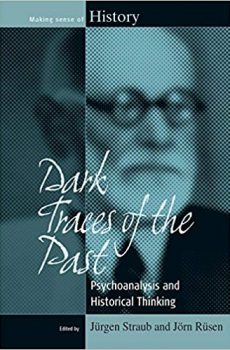
Deterritorialized Youth
8,400.00₹ 2,350.00₹
Adventure is currently enjoying enormous interest in public culture. The image of Tarzan provides a rewarding lens through which to explore this phenomenon. In their day, Edgar Rice Burrough’s novels enjoyed great popularity because Tarzan represented the consummate colonial-era adventurer: a white man whose noble civility enabled him to communicate with and control savage peoples and animals. The contemporary Tarzan of movies and cartoons is in many ways just as popular, but carries different connotations. Tarzan is now the consummate “eco-tourist:” a cosmopolitan striving to live in harmony with nature, using appropriate technology, and helpful to the natives who cannot seem to solve their own problems. Tarzan is still an icon of adventure, because like all adventurers, his actions have universal qualities: doing something previously untried, revealing the previously undiscovered, and experiencing the unadulterated. Prominent anthropologists have come together in this volume to reflect on various aspects of this phenomenon and to discuss contemporary forms of adventure.
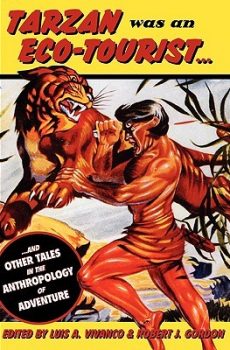
Tarzan was an Eco-Tourist
8,400.00₹ 2,250.00₹
Adventure is currently enjoying enormous interest in public culture. The image of Tarzan provides a rewarding lens through which to explore this phenomenon. In their day, Edgar Rice Burrough’s novels enjoyed great popularity because Tarzan represented the consummate colonial-era adventurer: a white man whose noble civility enabled him to communicate with and control savage peoples and animals. The contemporary Tarzan of movies and cartoons is in many ways just as popular, but carries different connotations. Tarzan is now the consummate “eco-tourist:” a cosmopolitan striving to live in harmony with nature, using appropriate technology, and helpful to the natives who cannot seem to solve their own problems. Tarzan is still an icon of adventure, because like all adventurers, his actions have universal qualities: doing something previously untried, revealing the previously undiscovered, and experiencing the unadulterated. Prominent anthropologists have come together in this volume to reflect on various aspects of this phenomenon and to discuss contemporary forms of adventure.
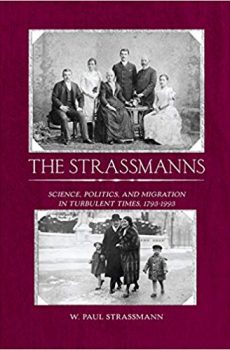
The Strassmanns
8,400.00₹ 1,890.00₹
Across six generations and two hundred years, this book tells the story of a German- Jewish family who emigrated from Rawicz, Poland, first to Prussian Berlin, and finally to America. In Berlin they found success in politics, medical science, theatre, and aviation and considered themselves German patriots. With the catastrophe of the First World War and its aftermath, they suffered rejection, threats, and persecution as their fellow citizens became unhinged by Nazism, forcing Strassmanns into exile abroad where they again made their mark and rebuilt successful careers. This book is populated by extraordinary characters, such as Wolfgang, the convicted revolutionary of 1848 who nevertheless led urban reform; by Ernst, who directed the only liberal anti-Nazi resistance movement; and by Antonie, a celebrated actress and transatlantic sports pilot. Strassmann highlights both the large-scale and the very personal dramas of this period in world history. The book is enhanced by many photographs, offering a fascinating document of the fate of a remarkable family.
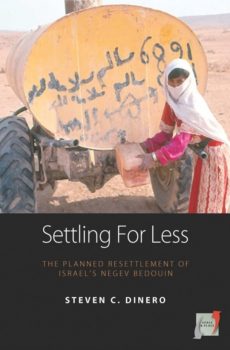
Settling for Less
8,400.00₹ 2,390.00₹
The resettlement of the Negev Bedouin (Israel) has been wrought with controversy since its inception in the 1960s. Presenting evidence from a two-decade period, the author addresses how the changes that took place over the past sixty to seventy years have served the needs and interests of the State rather than those of Bedouin community at large. While town living fostered improvements in social and economic development, numerous unintended consequences jeopardized the success of this planning initiative. As a result, the Bedouin community endured excessive hardship and rapid change, abandoning its nomadic lifestyle and traditions in response to the economic, political, and social pressure from the State―and received very little in return.
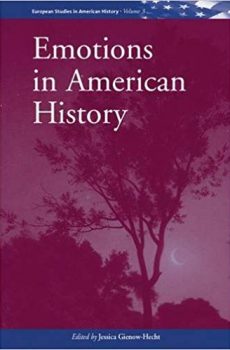
Emotions in American History
8,400.00₹ 3,295.00₹
The study of emotions has attracted anew the interest of scholars in various disciplines, igniting a lively public debate on the constructive and destructive power of emotions in society as well as within each of us. Most of the contributors to this volume do not hail from the United States but look at the nation from abroad. They explore the role of emotions in history and ask how that exploration changes what we know about national and international history, and in turn how that affects the methodological study of history. In particular they focus on emotions in American history between the 18th century and the present: in war, in social and political discourse, as well as in art and the media. In addition to case studies, the volume includes a review of their fields by senior scholars, who offer new insights regarding future research projects.
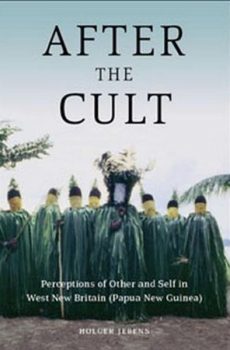
After The Cult
8,400.00₹ 1,950.00₹
In many parts of the world the “white man” is perceived to be an instigator of globalization and an embodiment of modernity. However, so far anthropologists have paid little attention to the actual heterogeneity and complexity of “whiteness” in specific ethnographic contexts. This study examines cultural perceptions of other and self as expressed in cargo cults and masked dances in Papua New Guinea. Indigenous terms, images, and concepts are being contrasted with their western counterparts, the latter partly deriving from the publications and field notes of Charles Valentine. After having done his first fieldwork more than fifty years ago, this “anthropological ancestor” has now become part of the local tradition and has thus turned into a kind of mythical figure. Based on anthropological fieldwork as well as on archival studies, this book addresses the relation between western and indigenous perceptions of self and other, between “tradition” and “modernity,” and between anthropological “ancestors” and “descendants.” In this way the work contributes to the study of “whiteness,” “cargo cults” and masked dances in Papua New Guinea.
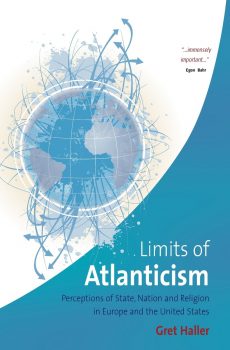
Limits of Atlanticism
8,400.00₹ 2,790.00₹
Working as Ombudsperson for Human Rights in the State of Bosnia and Herzegovina in Sarajevo, Gret Haller became aware that the reactions of the United States and Europe are hardly ever the same, be it in Bosnia or in other parts of the world, with the current crisis in the Middle East offering just another example: in international negotiations it is always the United States that refuses to give up sovereignty. While Europeans view sharing as an instrument to guarantee freedom and peace, Washington sees it as a threat to its independence and power. Instead, the U.S. government relies on unsanctioned campaigns against rogue states. The author is not optimistic that the recent shift in the political climate in the U.S. will change this deeply ingrained attitude. In her book, based on in-depth and first-hand experience in the transatlantic political arena, the author concludes that any fresh approach towards addressing these differences will first require an understanding of their roots in history. In Europe, the Peace of Westphalia of 1648 began a development that led to the emergence of a nation-state that ultimately came to be based on shared sovereignty. In the New World, however, the dominance of society over the state marked a break with that European tradition.
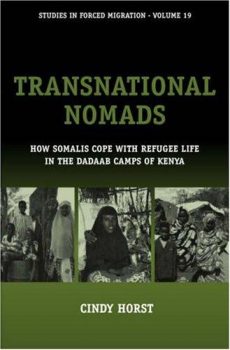
Transnational Nomads
8,400.00₹ 2,790.00₹
The daily pictures of refugee camps, mostly in Africa, make one wonder as to how the refugees manage to survive under these abject conditions. This path-breaking study of Somalis, in a camp in Kenya, offers some explanations. The author argues that it is wrong to look at the camps in isolation, but that one has to consider historical, social and transnational dimensions if one wants to understand the coping mechanisms that enable people to survive. Her book shows how Somalis were able to adapt their “nomadic” heritage to life in the camp, including a high degree of mobility and strong social networks that also reach beyond the confines of the camp as far as the US and Europe.

When God Comes to Town
8,400.00₹ 1,995.00₹
Around 1800 roughly three per cent of the human population lived in urban areas; by 2030 this number is expected to have gone up to some seventy per cent. This poses problems for traditional religions that are all rooted in rural, small-scale societies. The authors in this volume question what the possible appeal of these old religions, such as Christianity, Judaism, or Islam could be in the new urban environment and, conversely, what impact global urbanization will have on learning and on the performance and nature of ritual. Anthropologists, historians and political scientists have come together in this volume to analyse attempts made by churches and informal groups to adapt to these changes and, at the same time, to explore new ways to study religions in a largely urbanized environment.
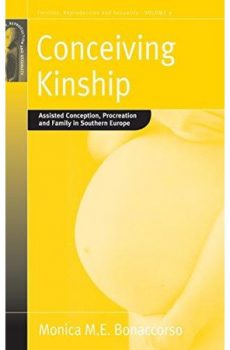
Conceiving Kinship
8,400.00₹ 2,590.00₹
Conceiving Kinship is an in-depth journey, the first of its kind, into how heterosexual, lesbian and gay couples using programmes of gamete donation conceptualize and make Italian kinship. It explores the provision of treatment in clinical and non-clinical settings at a time when Italy was considered the ‘Wild-West’ of assisted conception. This compelling study provides a new perspective on hotly debated issues in kinship studies and the modern medical technologies; it offers fresh insights into longstanding questions of cultural continuities and discontinuities in European kinship.

Biography Between Structure and Agency
8,400.00₹ 2,190.00₹
While bookstore shelves around the world have never ceased to display best-selling “life-and-letters” biographies in prominent positions, the genre became less popular among academic historians during the Cold War decades. Their main concern then was with political and socioeconomic structures, institutions, and organizations, or―more recently―with the daily lives of ordinary people and small communities. The contributors to this volume―all well known senior historians―offer self-critical reflections on problems they encountered when writing biographies themselves. Some of them also deal with topics specific to Central Europe, such as the challenges of writing about the lives of both victims and perpetrators. Although the volume concentrates on European historiography, its strong methodological and conceptual focus will be of great interest to non-European historians wrestling with the old “structure-versus-agency” question in their own work.
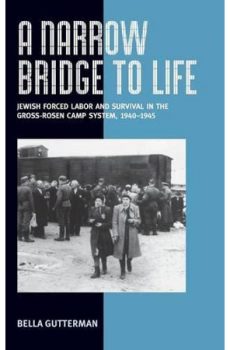
A Narrow Bridge to Life
8,400.00₹ 3,495.00₹
By 1944 a large part of Eastern Europe had already been liberated by the Red Army, and the Allied forces were continuing to move in from the west after success at Normandy. Yet, in Lower Silesia, Germany more than sixty new forced labor camps were established, adding to the approximately forty camps that already existed. The inmates were Jews from Hungary and Poland who had been deported from the Lodz ghetto or who had been included on the infamous “Schindler’s List.” These camps became satellites of the Gross-Rosen concentration camp and were the last to be liberated. Throughout their existence, the Gross-Rosen camp and its satellites had a special relationship. This is why, although the process of genocide was proceeding at top speed, some Jews were diverted from the gas chambers and sent to work at Gross-Rosen. Auschwitz-Birkenau was the main provider of inmate slave laborers for the Gross-Rosen armaments, munitions, and other factories owned by giant private enterprises, such as Krupp, I.G. Farben, and Siemens. Jewish inmates were also used in the construction of Hitler’s secret headquarters in the local Eulen Mountains and the secret underground tunnels used to store weapons. This book adds greatly to our knowledge of the complexity of German policy toward the Jews and forced labor. It not only describes the daily life of Jewish slave laborers but also traces Reich economic policy and the big corporations that used forced labor.
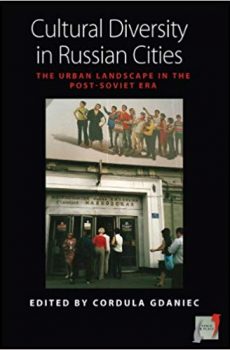
Cultural Diversity in Russian Cities
8,400.00₹ 1,990.00₹
Cultural diversity ― the multitude of different lifestyles that are not necessarily based on ethnic culture ― is a catchphrase increasingly used in place of multiculturalism and in conjunction with globalization. Even though it is often used as a slogan it does capture a widespread phenomenon that cities must contend with in dealing with their increasingly diverse populations. The contributors examine how Russian cities are responding and through case studies from Moscow, St. Petersburg, Novosibirsk, and Sochi explore the ways in which different cultures are inscribed into urban spaces, when and where they are present in public space, and where and how they carve out their private spaces. Through its unique exploration of the Russian example, this volume addresses the implications of the fragmented urban landscape on cultural practices and discourses, ethnicity, lifestyles and subcultures, and economic practices, and in doing so provides important insights applicable to a global context.
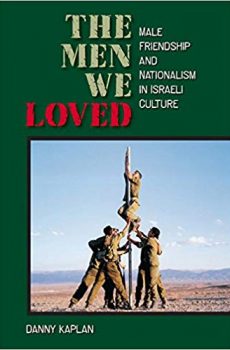
The Men We Loved
8,400.00₹ 2,595.00₹
Some semi-public, exclusive male settings, most noticeably in the military, encourage the production of intimacy and desire. Yet, whereas in most instances this desire is displaced through humor and aggressive gestures, it becomes acknowledged and outright declared once associated with sites of heroic death. In his provocative study of interrelations between friendship in everyday life and national sentiments in Israel, the author follows selected stories of friendship ranging over early childhood, school, the workplace, and some unique war experiences. He explores the symbolism of friendship in rituals for the fallen soldiers, the commemoration of Prime Minister Yitzhak Rabin, and the national infatuation with recovering bodies of missing soldiers. He concludes that the Israeli case offers an extreme instance of a much broader cultural phenomenon: declaring the friendship for the dead epitomizes the political “blood pact” between men, taking precedence over the traditional blood ties of kinship and heterosexual unions. The book underscores nationalism as a homosocial-based emotion of commemorative desire.
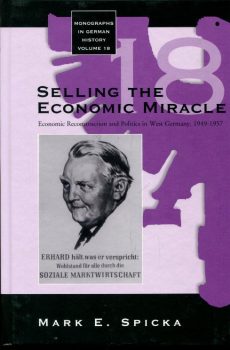
Selling the Economic Miracle
8,400.00₹ 2,095.00₹
Through an examination of election campaign propaganda and various public relations campaigns, reflecting new electioneering techniques borrowed from the United States, this work explores how conservative political and economic groups sought to construct and sell a political meaning of the Social Market Economy and the Economic Miracle in West Germany during the 1950s.The political meaning of economics contributed to conservative electoral success, constructed a new belief in the free market economy within West German society, and provided legitimacy and political stability for the new Federal Republic of Germany.
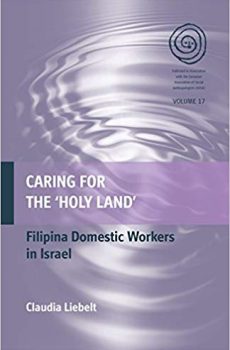
Caring for the ‘Holy Land’
8,400.00₹ 3,900.00₹
In Israel, as in numerous countries of the global North, Filipina women have been recruited in large numbers for domestic work, typically as live-in caregivers for the elderly. The case of Israel is unique in that the country has a special significance as the ‘Holy Land’ for the predominantly devout Christian Filipina women and is at the center of an often violent conflict, which affects Filipinos in many ways. In the literature, migrant domestic workers are often described as being subject to racial discrimination, labor exploitation and exclusion from mainstream society. Here, the author provides a more nuanced account and shows how Filipina caregivers in Israel have succeeded in creating their own collective spaces, as well as negotiating rights and belonging. While maintaining transnational ties and engaging in border-crossing journeys, these women seek to fulfill their dreams of a better life. During this process, new socialites and subjectivities emerge that point to a form of global citizenship in the making, consisting of greater social, economic and political rights within a highly gendered and racialized global economy.
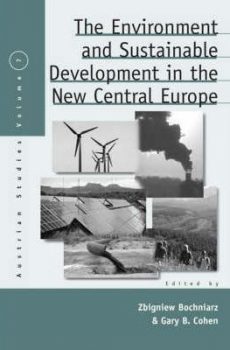
Tuff City
8,400.00₹ 1,990.00₹
This is an important book. In a whole series of ways this study of contemporary Naples will set a bench-mark for urban studies and the way urban history is carried out. It is a book about Naples and thus about the particularities and peculiarities of that specific city. However, this is also a book which goes way beyond Naples itself. It has a lot to tell us about the way the city can and should be studied – about urban studies methodologies – and in this area it is highly original and in some ways sets a new agenda for other researchers, historians, anthropologists, ethnologists, and those using cultural studies approaches. John Foot, University College London This is one of the best books I have read: beautifully written and extremely well researched (a refreshing mix of archival research and participant observation) and superbly theorized, with an impressive knowledge of the range of urban theory, as well as meticulous historical contextualization. Jo Labanyi, New York University …[A]n interesting and readable text. It is scholarly, ambitious in scope and well written.

The Environment and Sustainable Development in the New Central Europe
8,400.00₹ 2,190.00₹
With the enlargement of the European Union, the accession countries are coming under pressure to develop and meet EU standards for environmental protection and sustainable development. In this ongoing process, global economic liberalization, regulatory policy, conservation, and lifestyle issues are all involved, and creative solutions will have to be found. Historians, geographers, economists, ecologists, business management experts, public policy specialists, and community organizers have come together in this volume and examine, for the first time, environmental issues ranging from national and regional policy and macroeconomics to local studies in community regeneration. The evidence suggests that, far from being mere passive recipients of instruction and assistance from outside, the people of Central and East Central Europe have been engaged actively in working out solutions to these problems. Several promising cases illustrate opportunities to overcome crisis situations and offer examples of good practices, while others pose warnings.
The experiences of these countries in wrestling with issues of sustainability continue to be of importance to policy development within the EU and may serve also as examples for both developed and developing countries worldwide.

